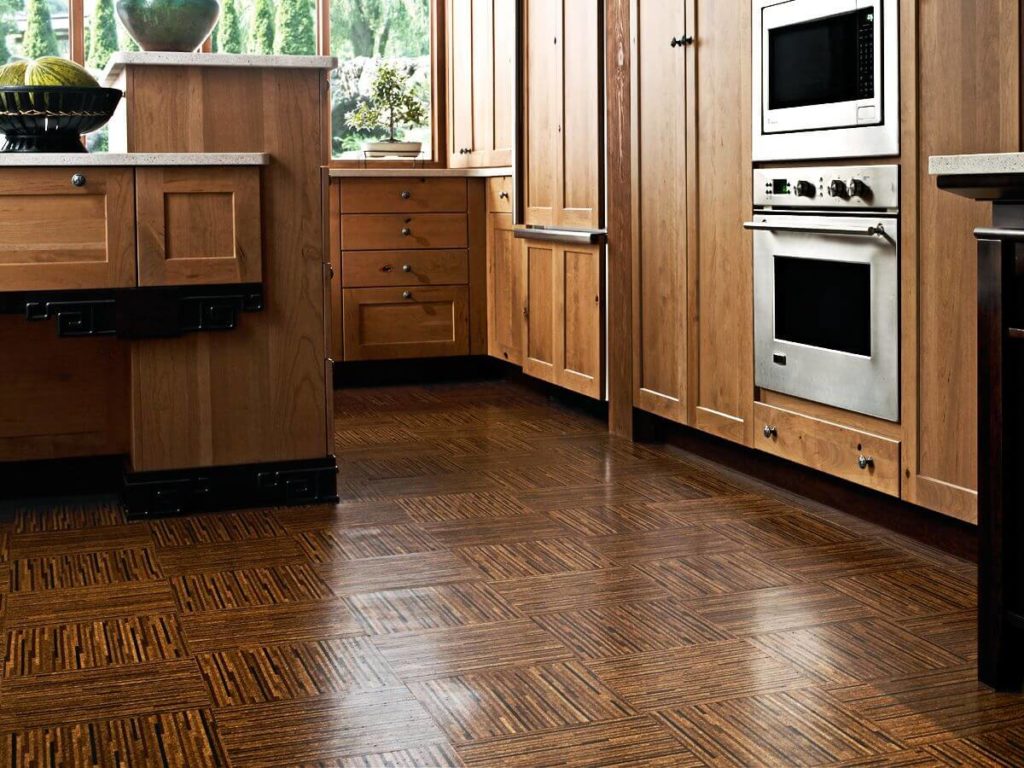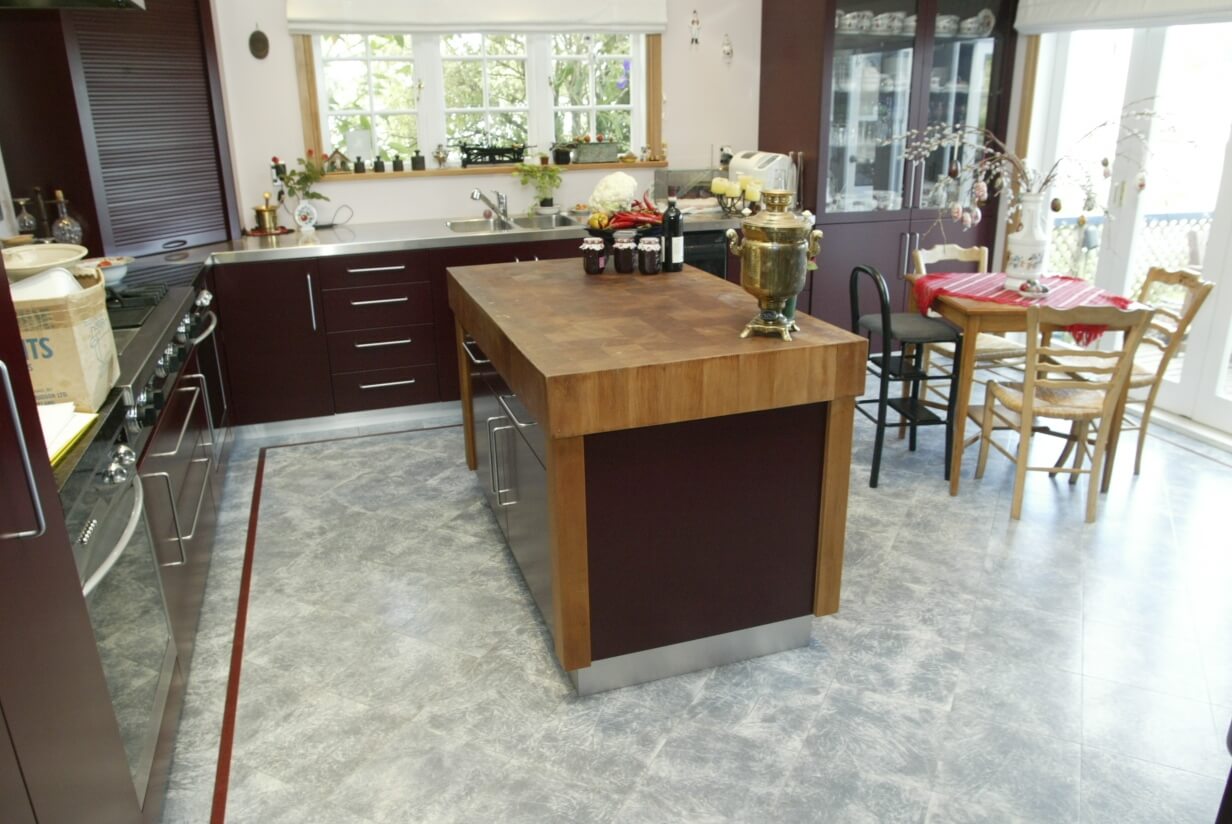Cork Flooring Benefits in Kitchens and Bathrooms: Is Cork Flooring Good For Kitchens And Bathrooms

Cork flooring offers numerous benefits for both kitchens and bathrooms, making it a versatile and desirable flooring option. Its unique properties contribute to a comfortable, stylish, and practical living environment.
Cork Flooring Benefits in Kitchens
Cork flooring is a surprisingly practical choice for kitchens. Its natural composition provides inherent advantages that enhance functionality and aesthetics.
- Water Resistance: Cork possesses a naturally occurring protective layer that makes it resistant to water damage. This layer, known as suberin, acts as a barrier against moisture penetration, ensuring the floor remains stable and durable even in areas prone to spills or splashes.
- Durability: Cork flooring is surprisingly durable. Its resilience stems from its cellular structure, which allows it to compress and rebound under pressure. This feature makes it resistant to scratches, dents, and impacts, ensuring long-lasting performance in a high-traffic area like a kitchen.
- Ease of Cleaning: Cork flooring is easy to clean and maintain. Its smooth surface prevents dirt and grime from accumulating, and its water-resistant nature allows for easy mopping or sweeping. Regular cleaning with a damp cloth and mild detergent keeps the floor looking fresh and hygienic.
Cork Flooring Benefits in Bathrooms
Cork flooring offers a unique blend of comfort and functionality that makes it an ideal choice for bathrooms.
- Warmth and Comfort: Cork is a naturally warm material that feels pleasant underfoot. This warmth is especially appreciated in bathrooms, where cold tiles can be uncomfortable.
- Comfort: Cork flooring provides a cushioned and springy surface, making it comfortable to stand on for extended periods. This is particularly beneficial in bathrooms, where people often spend time getting ready or relaxing.
- Slip Resistance: Cork flooring offers excellent slip resistance, making it a safer option for bathrooms, especially for those with young children or elderly individuals. Its textured surface provides a secure footing, reducing the risk of accidents.
Cork Flooring Design Versatility
Cork flooring seamlessly integrates into various kitchen and bathroom design styles. Its natural beauty and versatility allow it to complement both traditional and modern aesthetics.
- Traditional Kitchens: Cork flooring with a warm, rustic finish can enhance the charm of a traditional kitchen, creating a cozy and inviting atmosphere.
- Modern Kitchens: Cork flooring in sleek, minimalist designs can complement a modern kitchen’s clean lines and contemporary aesthetic.
- Rustic Bathrooms: Cork flooring with a natural, unpolished finish can enhance the rustic charm of a bathroom, creating a cozy and inviting space.
- Modern Bathrooms: Cork flooring in bold colors and geometric patterns can add a touch of sophistication to a modern bathroom, creating a stylish and contemporary feel.
Cork Flooring Durability and Maintenance
Cork flooring offers a good balance of durability and low maintenance, making it a practical choice for both kitchens and bathrooms.
- Durability: Cork flooring is known for its durability and resistance to wear and tear. Its natural resilience allows it to withstand foot traffic and everyday use.
- Maintenance: Cork flooring is relatively easy to maintain. Regular sweeping and mopping with a damp cloth and mild detergent are usually sufficient to keep the floor clean.
Cork Flooring vs. Other Flooring Options
Cork flooring compares favorably to other popular flooring options in terms of durability, maintenance, and aesthetics.
- Tile: Tile is durable and water-resistant but can be cold and hard underfoot. Cork flooring offers a warmer and more comfortable alternative while still providing durability and water resistance.
- Wood: Wood flooring is beautiful and natural but can be susceptible to water damage and scratches. Cork flooring provides similar aesthetics while offering better water resistance and scratch resistance.
- Vinyl: Vinyl flooring is affordable and easy to maintain but can lack the natural warmth and comfort of cork. Cork flooring provides a more luxurious and environmentally friendly alternative.
Considerations for Using Cork Flooring in Kitchens and Bathrooms

While cork flooring offers numerous benefits, it’s essential to consider potential drawbacks and practical aspects before installing it in kitchens and bathrooms, two high-traffic areas that present unique challenges.
Durability and Maintenance
Cork flooring is naturally soft and porous, making it susceptible to scratches, dents, and stains. In kitchens, spills from cooking oil, wine, or other liquids can penetrate the surface, leading to discoloration or permanent damage if not cleaned promptly. Similarly, in bathrooms, water spills or splashes can seep into the cork, potentially causing mold growth or warping if not addressed quickly. Regular maintenance is crucial to ensure the longevity and aesthetics of cork flooring in these high-traffic areas.
Proper Installation and Sealing
Proper installation and sealing are paramount to maximizing the performance and lifespan of cork flooring in kitchens and bathrooms. Cork tiles should be installed over a moisture-resistant underlayment, and the subfloor must be level and free of any imperfections. Sealing the cork floor with a high-quality sealant creates a protective barrier against moisture, spills, and stains, enhancing its durability and water resistance.
Maintenance Practices, Is cork flooring good for kitchens and bathrooms
Maintaining cork flooring in kitchens and bathrooms requires a proactive approach to keep it clean, protected, and looking its best.
- Regular Sweeping and Vacuuming: Sweep or vacuum the floor regularly to remove dust, dirt, and debris that can accumulate over time. Avoid using abrasive cleaning tools or harsh chemicals that can damage the surface.
- Prompt Spill Cleanup: Wipe up spills immediately, especially in kitchens and bathrooms where spills are more common. Blot spills gently with a clean, absorbent cloth or paper towel, avoiding harsh scrubbing that can damage the surface.
- Periodic Cleaning: Clean the floor periodically with a damp mop and a mild, pH-neutral cleaner specifically designed for cork flooring. Avoid using harsh cleaners, abrasive scrubbers, or excessive water that can damage the surface.
- Sealing: Reseal the floor every 12-24 months, depending on the traffic and wear, to maintain its protective barrier and prevent moisture penetration.
Cost Comparison
Cork flooring typically costs more than traditional flooring options like vinyl or laminate but less than hardwood or tile. However, its durability and longevity, coupled with its natural beauty and sustainability, make it a worthwhile investment, especially for those seeking a unique and eco-friendly flooring solution.
Choosing the Right Cork Flooring for Kitchens and Bathrooms

Selecting the right cork flooring for your kitchen and bathroom involves considering various factors, such as the type of cork, thickness, finish, density, and compression rate. These factors will affect the flooring’s durability, comfort, and aesthetic appeal.
Types of Cork Flooring
The type of cork flooring you choose will depend on your budget, desired look, and the level of foot traffic your kitchen and bathroom receive.
- Natural Cork: This type of cork flooring is made from the bark of the cork oak tree. It is a sustainable and environmentally friendly option, known for its natural warmth and sound-absorbing qualities. Natural cork flooring is typically more expensive than agglomerated cork. It is available in various finishes, including oiled, lacquered, and waxed.
- Agglomerated Cork: This type of cork flooring is made from cork granules that are bonded together with a binder. It is a more affordable option than natural cork and is available in a wide range of colors and patterns. Agglomerated cork is also more durable than natural cork, making it a good choice for high-traffic areas.
- Cork Tiles: These are pre-cut squares or rectangles of cork flooring that are easy to install. Cork tiles are available in various sizes and thicknesses, making them a versatile option for both kitchens and bathrooms. They are also available in a wide range of colors and patterns, allowing you to create a unique and stylish look.
Cork Flooring Thickness and Finish
The thickness and finish of your cork flooring will affect its durability, comfort, and overall appearance.
- Thickness: Thicker cork flooring is more durable and provides better insulation. For kitchens and bathrooms, a thickness of 3/8 inch to 1/2 inch is recommended.
- Finish: The finish of your cork flooring will affect its resistance to stains, scratches, and moisture. For kitchens and bathrooms, a polyurethane or wax finish is recommended.
Cork Density and Compression Rate
The density and compression rate of cork flooring are important factors to consider for durability and comfort.
- Density: The density of cork flooring refers to its weight per unit volume. Higher density cork is more durable and resistant to indentation.
- Compression Rate: The compression rate of cork flooring refers to how much it compresses under pressure. A lower compression rate indicates a more resilient and comfortable flooring.
Matching Cork Flooring Colors and Textures with Décor
Choosing the right color and texture for your cork flooring can help create a cohesive and stylish look in your kitchen and bathroom.
- Colors: Consider the existing color scheme of your kitchen and bathroom when selecting cork flooring. Neutral colors, such as beige, brown, and gray, are versatile and can complement a wide range of décor styles.
- Textures: Cork flooring comes in various textures, from smooth to textured. Smooth cork flooring is easier to clean, while textured cork flooring can add visual interest and create a more natural look.
Is cork flooring good for kitchens and bathrooms – Cork flooring is a popular choice for kitchens and bathrooms due to its natural warmth, water resistance, and sound-dampening properties. When considering a galley bathroom layout, which often prioritizes space optimization, cork flooring can be a particularly good choice. If you’re interested in exploring different galley bathroom floor plan options, check out galley bathroom floor plans for inspiration.
No matter your bathroom’s size, cork flooring can contribute to a comfortable and stylish space.
While cork flooring is known for its natural warmth and sound-dampening properties, it might not be the ideal choice for kitchens and bathrooms due to its susceptibility to moisture. If you’re seeking a durable and water-resistant alternative, consider installing Lifeproof vinyl plank flooring in your bathroom.
Lifeproof’s innovative technology offers exceptional water resistance, making it a practical and stylish option for high-traffic areas like kitchens and bathrooms.